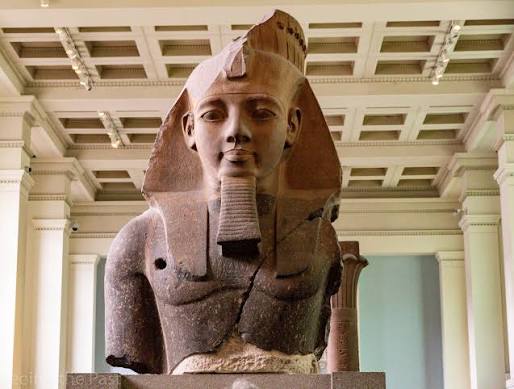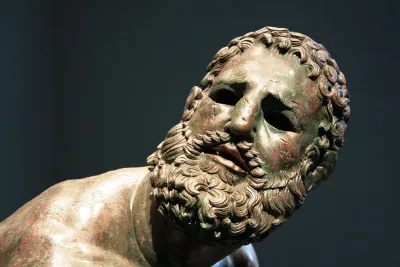TWIL #36: From Archeology to Hors Category

Every Sunday, I share a few of my learnings, reflections, and curiosities from the week. Things I stumbled upon, things I questioned, things that made me look twice. It’s not about being right or complete… it’s about noticing, wondering, and learning out loud.
Thanks for reading. I hope it sparks something for you too.
Ancient archeology
I came across a surprising message the other day: the ancient Egyptians sometimes acted as archaeologists of their own past.
That stopped me. To even have an “ancient past” worth excavating, a civilization has to last a very long time. Egypt did, thousands of years, long enough that by the time of Cleopatra, the pyramids were already more ancient to her than she is to us!
That made me curious.
Egypt: digging into its own golden age
The Egyptians didn’t practice archaeology the way we think of it, with careful grids and notebooks. For them it was about legitimacy and reverence… and, sometimes, rewriting history.

- Pharaohs like Ramesses II and Seti I restored temples that had been crumbling for centuries, proudly carving their names over earlier ones. It was part repair, part self-promotion.
- In the 26th Dynasty (around 600 BCE), Psamtik I sent expeditions to find Old Kingdom tombs. What he “discovered” wasn’t always faithfully recorded: sometimes names were misremembered, sometimes gaps were filled with convenient invention.
- Priests compiled king lists, but these were often selective: embarrassing rulers left out, dynastic claims polished to make the lineage appear unbroken.
- Ancient statues, once dug up, might be re-carved with new inscriptions, turning a relic of the past into propaganda for the present.
So yes, they dug… but they also reshaped the story to fit what they wanted their descendants to believe.
Other civilizations that re-curated their past
Once you notice this, you see it everywhere: curiosity entwined with control.
- Mesopotamia: King Nabonidus (6th century BCE) dug deep into old ruins, proudly announcing himself as a restorer of forgotten gods. But his “reports” were biased, praising himself as the only one wise enough to recover the ancient truth.
- China: When emperors collected old bronze ritual vessels, scholars pored over the inscriptions. But interpretation was political: different readings could justify rival claims about who held the Mandate of Heaven.
- Rome: Antiquarians (yes, they apparantly had people who were professional antiquarians) and emperors restored temples, but in the process they often “improved” the past. Polishing crumbling legends into neat genealogies that tied Rome back to Trojan heroes.
- The Maya: Kings who re-carved old monuments weren’t honoring history so much as appropriating it: making a dead ancestor say what they wanted said in the present.
Climbing mountains…

This week I’ve been cycling in and around Gerona with friends. Love it. Long climbs, good coffee, even better company. Unfortunately, I was sick on the day we were supposed to climb Rocacorba, the legendary wall just outside the city. Instead, I ended up drinking at a café called Hors Catégorie.
It made me wonder… how are mountains actually classified?
Turns out, the system comes from the early days of the Tour de France… and it wasn’t even made for cyclists. The French originally graded climbs by how difficult they were for cars to get over. From there, it evolved into the familiar system that defines cycling’s most beautiful suffering.
Here’s how it works:
🏷️ Category 4
The smallest climbs. Under 3 km, gentle slopes of 3–5%. The kind of hill that wakes the legs up.
🏷️ Category 3
3–5 km long, gradients around 5–7%. Manageable, but you feel it.
🏷️ Category 2
5–10 km, with 6–8% average. You start pacing yourself here.
🏷️ Category 1
10–15 km or more, gradients near 8–10%. These are the serious ones. Where breathing becomes rhythm.
🏷️ Hors Catégorie (HC)
Literally “beyond category.” Usually more than 15 km long or rising over 1,000 meters, with steep stretches that hit double digits. The kind of climb that breaks classification…. and sometimes riders too.
They’re the mountains that seem endless, where gravity feels personal, and where the battle shifts from the body to the mind.
Maybe next year I’ll make it up Rocacorba. For now, I’ll settle for having a drink at Hors Catégorie and dreaming of the view from the top.
The power of quotes
I’ve always been a sucker for quotes. One good sentence, heard at the right moment, can feel like a key that unlocks a whole new door.
This week I came across a video of Peter Dinklage sharing a quote that had motivated him:
“According to the laws of aerodynamics, the bumblebee cannot fly. But the bumblebee doesn’t know that, so it goes on flying anyway.”
Yes, scientists will tell you that bumblebees fly just fine… but as a metaphor it’s brilliant. It says: don’t let other people’s calculations define your limits.
And it made me think: we should never underestimate the power of a strong quote. They’re portable sparks of wisdom, easy to carry, but able to ignite something big.
Here are a few that have stayed with me:
Ellen Johnson Sirleaf, Nobel Peace Prize winner and former president of Liberia
“If your dreams do not scare you, they are not big enough.”
Albert Einstein (supposedly) said:
“Logic will get you from A to B. Imagination will take you everywhere.”
And one of my quiet favorites, from an old Chinese proverb:
“The best time to plant a tree was 20 years ago. The second best time is now.”
Quotes don’t solve problems for us. But sometimes they remind us of the courage we already have. Like the bumblebee, they whisper: just keep flying.





